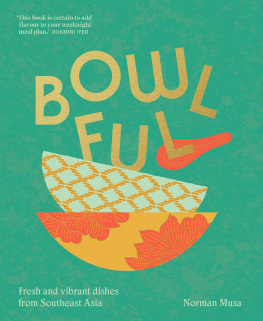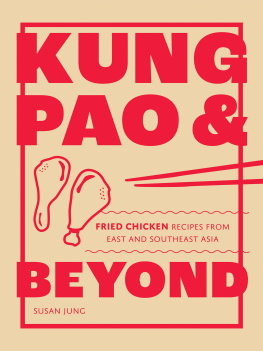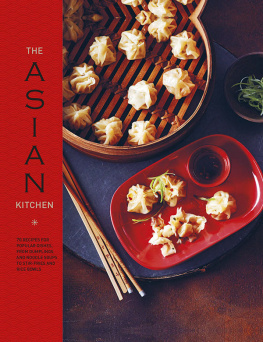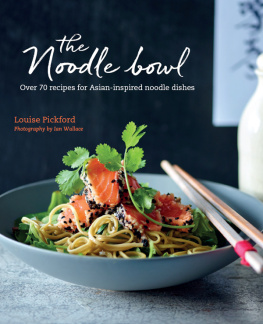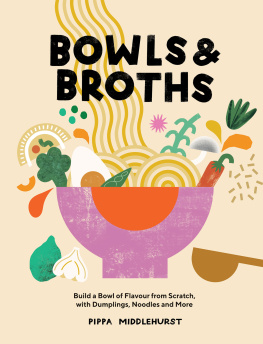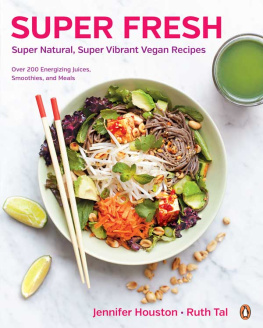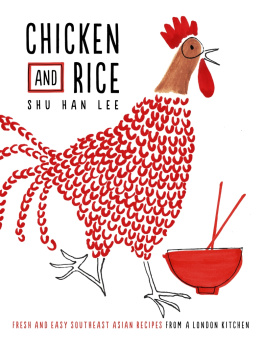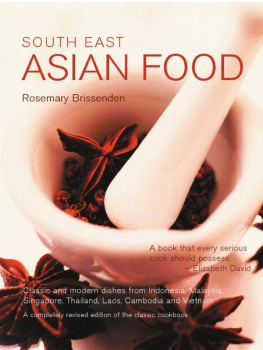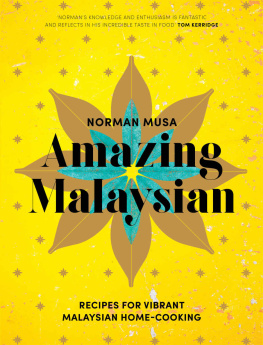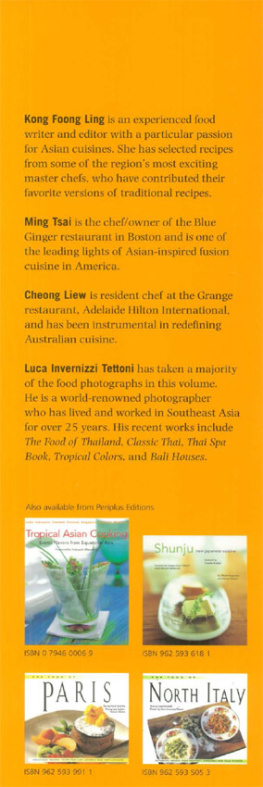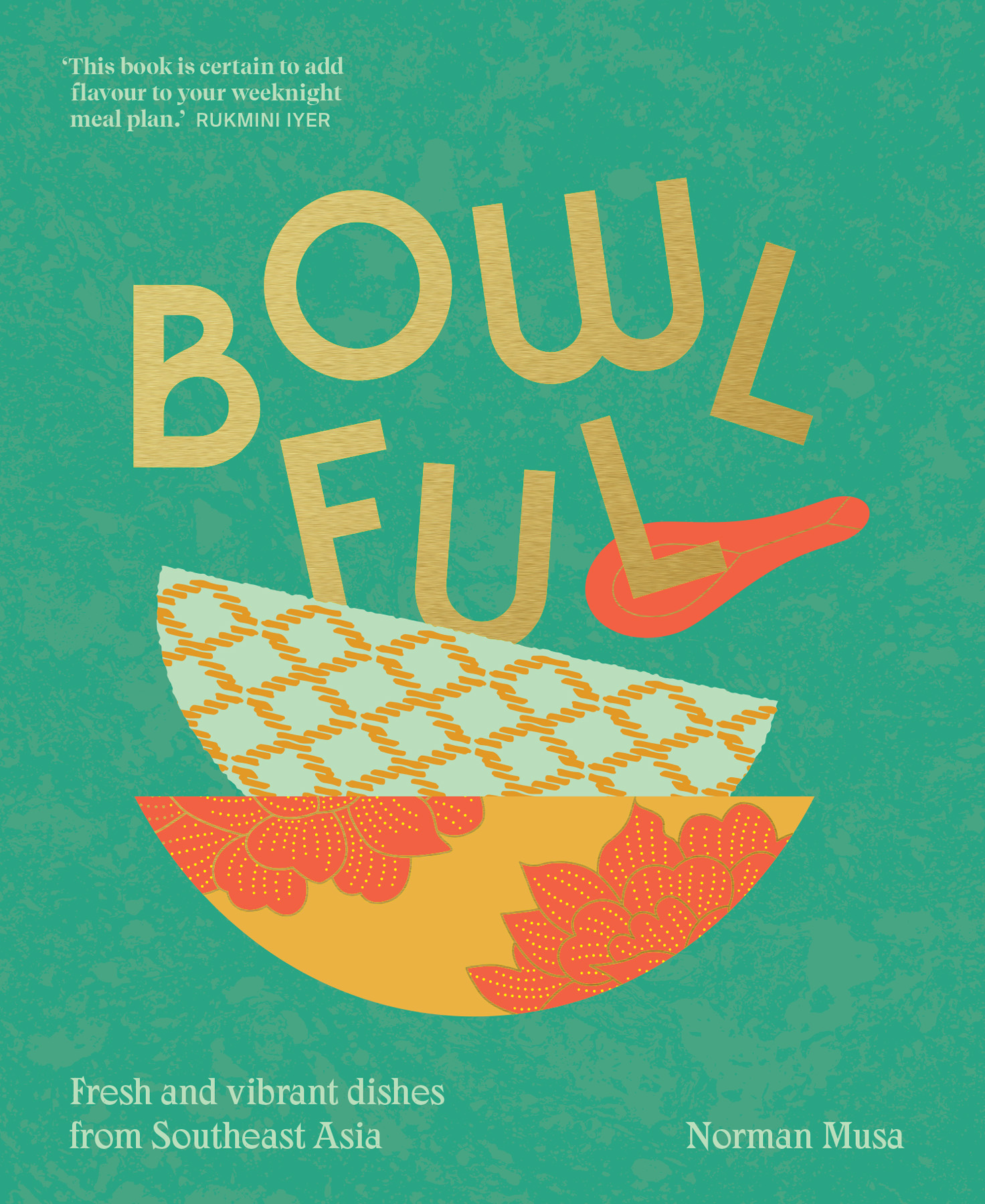Norman Musa - Bowlful: Fresh and vibrant dishes from Southeast Asia
Here you can read online Norman Musa - Bowlful: Fresh and vibrant dishes from Southeast Asia full text of the book (entire story) in english for free. Download pdf and epub, get meaning, cover and reviews about this ebook. year: 2022, publisher: Pavilion Books, genre: Home and family. Description of the work, (preface) as well as reviews are available. Best literature library LitArk.com created for fans of good reading and offers a wide selection of genres:
Romance novel
Science fiction
Adventure
Detective
Science
History
Home and family
Prose
Art
Politics
Computer
Non-fiction
Religion
Business
Children
Humor
Choose a favorite category and find really read worthwhile books. Enjoy immersion in the world of imagination, feel the emotions of the characters or learn something new for yourself, make an fascinating discovery.
- Book:Bowlful: Fresh and vibrant dishes from Southeast Asia
- Author:
- Publisher:Pavilion Books
- Genre:
- Year:2022
- Rating:5 / 5
- Favourites:Add to favourites
- Your mark:
Bowlful: Fresh and vibrant dishes from Southeast Asia: summary, description and annotation
We offer to read an annotation, description, summary or preface (depends on what the author of the book "Bowlful: Fresh and vibrant dishes from Southeast Asia" wrote himself). If you haven't found the necessary information about the book — write in the comments, we will try to find it.
From crisp and zingy salads, to fresh and comforting rice bowls, and tangles of tasty noodles as well as plant-based bowls and stir fries, Bowlful will satisfy all your cravings, with 90 easy to follow recipes by Norman Musa. This book celebrates the fresh and diverse flavours of Asia distilled in deliciously simple bowl food.
From the bestselling author of Amazing Malaysian comes Bowlful: a celebration of the fresh and diverse flavours of Asia from Malaysia to Thailand, Indonesia, Vietnam, Laos, Cambodia and the Philippines with over 90 accessible and easy to follow recipes.
Born in Penang, chef and author Norman Musa has spent much of his life exploring the cultures and cuisines of South East Asia, picking up recipes and inspiration along the way. Bowlful is the distillation of many years of travel and a celebration of the economical, vibrant and deliciously simple bowl food from these regions. From crisp and zingy salads to fresh and comforting rice bowls and tangles of tasty noodles, as well as plant-based bowls and stir fries, Bowlful will satisfy all your cravings.
Within these pages you will find recipes for familiar family favourites such as Singapore Noodles, Pad Thai and Banh Mih as well as discovering some uncovered gems from across South East Asia including Lombok Grilled Chicken and Squid Sambal. Normans quick and streamlined recipes make your fakeaway dreams a reality offering fresh and vibrant dishes that burst with flavour covering everything from quick stir-fries and curries to noodles, rice all brimming with vegetarian and plant-based alternatives.
All the recipes are made with easily-sourced ingredients providing a healthier more satisfying alternative to reaching for Deliveroo, its never been easier to satisfy those cravings and bring an authentic taste of Asia to your home.
Norman Musa: author's other books
Who wrote Bowlful: Fresh and vibrant dishes from Southeast Asia? Find out the surname, the name of the author of the book and a list of all author's works by series.

